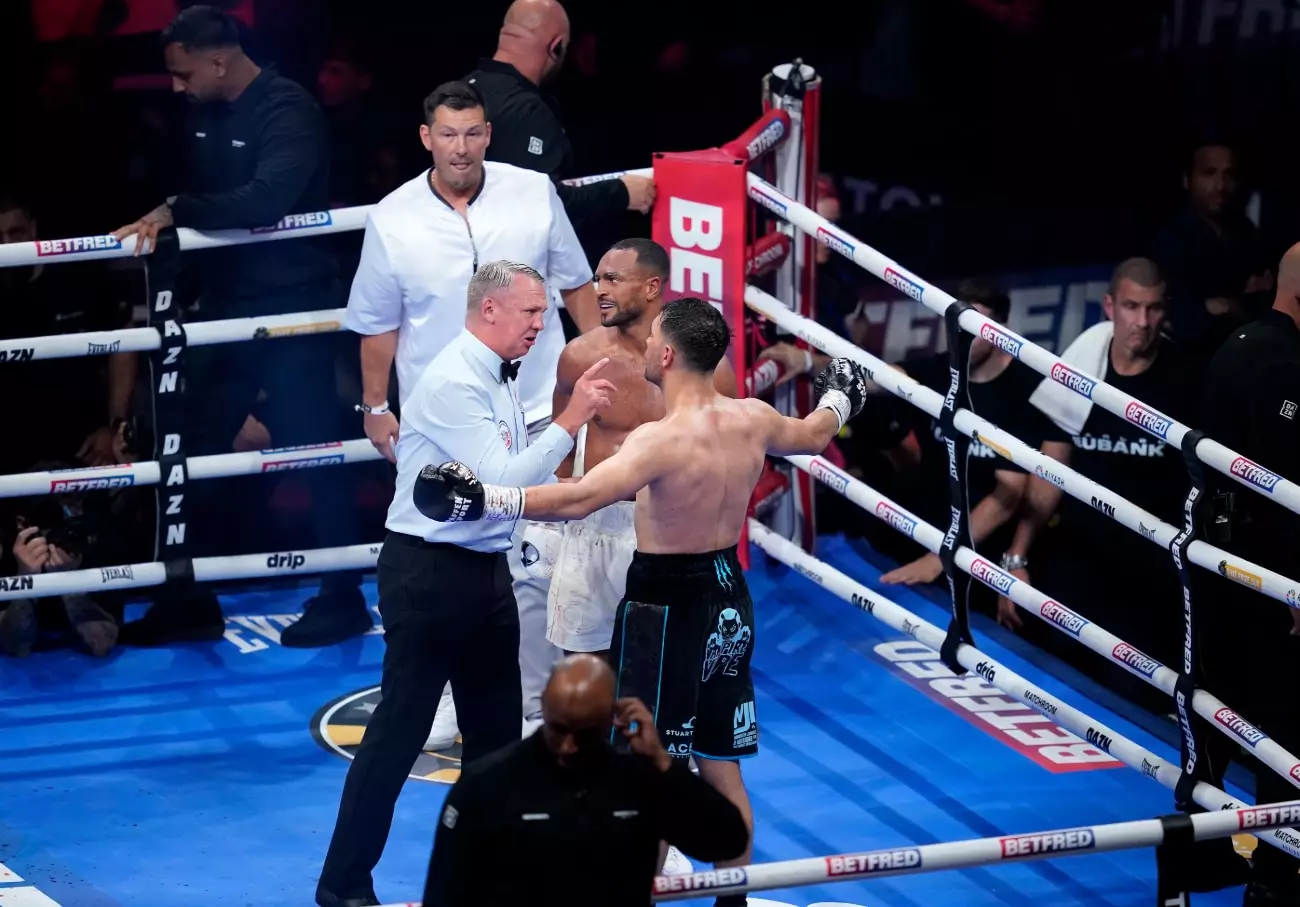Last night’s bout between Jack Catterall and Harlem Eubank epitomized the unpredictable, often frustrating nature of boxing. Instead of delivering a spirited contest filled with tactical brilliance or raw aggression, the evening descended into chaos, leaving fans with a bitter taste. What was anticipated to be a showcase of skill and determination devolved into a messy affair marred by accidental clashes and inconsistent gameplay.
From the outset, the fight lacked rhythm. Eubank appeared hesitant, seemingly reluctant to engage, perhaps wary of Catterall’s sharp punches and strategic footwork. Conversely, Catterall, while trying to impose his pace, found it challenging to break through Eubank’s cautious defense. The third round marked a turning point — both fighters tumbled to the canvas, a sign of their mutual clumsiness and the tense exchanges that characterized the bout. The incident that stole the spotlight, however, was the brutal head clash that left both men visibly distressed, particularly Catterall, with a severe cut that ultimately ended the fight prematurely.
The Fight’s Unfortunate End
Despite the chaos, the decision to halt the fight was inevitable. Catterall’s cut was not only deep but also posed significant risks, prompting the ringside officials to call a stop. The technical decision favored Catterall, with judges scoring at 69-65 and 69-66 in favor of the Brit, marking a bittersweet victory following a close defeat to Arnold Barboza Jr. for Catterall. Eubank, meanwhile, absorbed a notable setback, losing his undefeated record and adjusting his trajectory in a division that’s increasingly competitive and unforgiving.
While some critics argue that a rematch could have redeemed the fight’s excitement, the consensus leans toward the belief that avoiding further chaos was the correct call. Boxing is a sport of both resilience and wisdom — knowing when to fight and when to call it quits. Ultimately, this bout illustrated the sport’s fragility and the importance of fighter safety over glorified bouts marred by accidental injuries.
The Bigger Picture: The Power Moves in Modern Boxing
Promotional figures like Eddie Hearn play a critical role in shaping the next chapters of fighters’ careers. His comments after the fight reflected a pragmatic approach: acknowledging the unfortunate nature of the stoppage but emphasizing Catterall’s potential for bigger fights at welterweight. The divisional landscape is tumultuous yet exciting, with contenders lining up for lucrative and meaningful matchups that can elevate a boxer’s standing.
Hearn’s focus appears clear — steer Catterall toward high-profile bouts against fighters like Ryan Garcia, Rolly Romero, or Devin Haney. These matchups would not only bolster Catterall’s profile but also significantly impact the landscape of the 147-pound division. Promoters and managers are acutely aware that in an era of boxing marked by rapid weight class shifts and blockbuster paydays, a fighter’s “big fight” can redefine their career trajectory overnight.
Meanwhile, Harlem Eubank’s setback demonstrates the brutal reality of boxing’s unforgiving nature. Despite his inherent talent and promising future, a disappointing outing underscores how fleeting success can be if a fighter cannot adapt quickly. It’s a stark reminder that in boxing, mental fortitude and tactical flexibility often outweigh raw talent.
Behind the Glitz: The Unseen Dynamics of the Sport
What often gets lost in coverage is the strategic chess game played off the ring. Promotions, management decisions, and branding influence which fights happen and when. A messy, unsatisfying fight might seem like a failure, but from a business standpoint, it often serves a strategic purpose — creating buzz, setting up future matchups, or protecting certain fighters from premature or risky bouts.
The fight’s outcome, therefore, might be less about the spectacle in the ring and more about the larger game being played. Catterall’s victory, though marred by circumstances, could be a carefully orchestrated step towards a rematch or a high-stakes clash that fans will remember. This behind-the-scenes maneuvering highlights the sport’s complex ecosystem where perceptions, negotiations, and promotional interests shape the narratives far more than we often realize.
In boxing’s merciless world, a fight like last night’s is less an isolated event and more a piece of a larger puzzle. The decisions made in the immediate aftermath — who gets a title shot, which fighters are pitted against each other next — can redefine careers and influence the sport’s future.
This clash, messy yet meaningful, underscores the importance of strategic patience and understanding in boxing. Victory is not solely determined within the ring’s confines but also by the careful planning and calculated moves made behind closed doors. As fans, commentators, and stakeholders watch eagerly, the sport reveals its true nature: a relentless game of power, politics, and resilience, where even the most unsatisfying nights can set the stage for tomorrow’s greatest triumphs.

